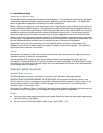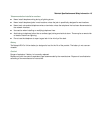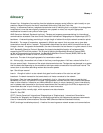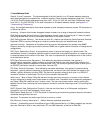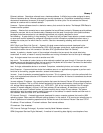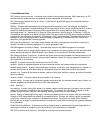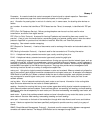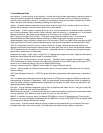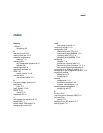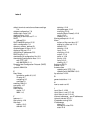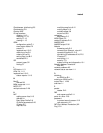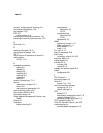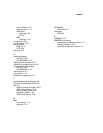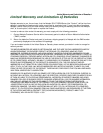6 User’s Reference Guide
soft seeding: A router setting. In soft seeding, if a router that has just been reset detects a network number or
zone name conflict between its configured information for a particular port and the information provided by
another router connected to that port, it updates its configuration using the information provided by the other
router. See also hard seeding, non-seeding, seeding, and seed router.
subnet: A network address created by using a subnet mask to specify that a number of bits in an internet
address will be used as a subnet number rather than a host address.
subnet mask: A 32-bit number to specify which part of an internet address is the network number, and which
part is the host address. When written in binary notation, each bit written as 1 corresponds to 1 bit of network
address information. One subnet mask applies to all IP devices on an individual IP network.
SDLC (Synchronous Data Link Control): A link-level communications protocol used in an International
Business Machines (IBM) Systems Network Architecture (SNA) network that manages synchronous,
code-transparent, serial information transfer over a link connection. SDLC is a subset of the more generic HDLC
(High-Level Data Link Control) protocol developed by the International Organization for Standardization (ISO).
TCP/IP (Transmission Control Protocol/Internet Protocol): An open network standard that defines how
devices from different manufacturers communicate with each other over one or more interconnected networks.
TCP/IP protocols are the foundation of the Internet, a worldwide network of networks connecting businesses,
governments, researchers, and educators.
telephone wall cable: 2-pair, 4-pair, or 8-pair, 22- or 24-gauge solid copper wire cable. Telephone wall cable is
sometimes called telephone station cable or twisted-pair cable.
TFTP (Trivial File Transfer Protocol/Internet Protocol): A protocol used to transfer files between IP nodes.
TFTP is often used to transfer firmware and configuration information from a UNIX computer acting as a TFTP
server to an IP networking device, such as the Netopia ISDN Router.
thicknet: Industry jargon for 10Base-5 coaxial cable, the original Ethernet cabling.
thinnet: Industry jargon for 10Base-2 coaxial cable, which is thinner (smaller in diameter) than the original
Ethernet cabling.
UDP (User Datagram Protocol): A TCP/IP protocol describing how packets reach applications in destination
nodes.
V.90: A modem data transmission standard, also known as V.PCM, which merges the K56flex standard with
the competing x2 standard. In September, 1998, the International Telecommunications Union is expected to
ratify the unified standard, thereby allowing interoperability of modems and ISPs’ central site equipment, with
appropriate firmware upgrades.
wall jack: A small hardware component used to tap into telephone wall cable. An RJ-11 wall jack usually has
four pins; an RJ-45 wall jack usually has eight pins.
WAN (wide area network): A network that consists of nodes connected by long-distance transmission media,
such as telephone lines. WANs can span a state, a country, or even the world.
WAN IP: In addition to being a router, the Netopia ISDN Router is also an IP address server. There are four
protocols it can use to distribute IP addresses over the WAN which include: DHCP, BOOTP, IPCP and MacIP. WAN
IP is a feature for Netopia ISDN Router models.
wiring closet: A central location where a building’s telephone and network wiring is connected. Multi-story
buildings often have a main wiring closet in the basement and satellite wiring closets on each floor.



